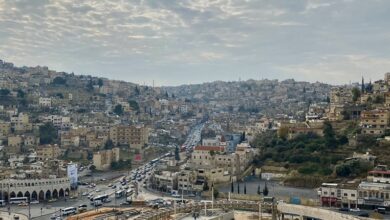
Relics of historical significance in Karak remain as ethereal remnants
shahennews
Nestled at the eastern gateway of the city of Karak, “Ain Al-Sitt” and the Ottoman bridges stand as cultural, historical, and architectural landmarks. Regrettably, these once-grand structures now exist only as remnants and memories, passed down by citizens and researchers, victims of the ravages of time and neglect.
Formerly a testament to architectural marvels, “Ain Al-Sitt” was an ancient edifice positioned in the region known by the locals as “Wadi Tawi.” It stood proudly before being transformed into a bus depot, leaving its significance obscured by layers of history.
According to researcher Hamed Al-Nawaiseh, “Ain Al-Sitt” comprised a flowing perennial spring, adorned by a two-tiered dome structure built by the Mamluks in the year 1200 AD. The first dome provided shade and purity to the spring, while the second served as a restful retreat for its visitors. The lush surroundings were once adorned with greenery and trees, creating a tranquil haven.
The moniker “Ain Al-Sitt” owes its origins to the presence of six adjacent tunnels carved into an adjacent rocky mountain slope. Mamluk rulers repurposed these tunnels as tombs, resulting in the name that pays homage to their sixfold arrangement. While the physical presence of “Ain Al-Sitt” has been lost to time, these six tunnels remain as silent witnesses to its past existence.
Scholar Youssef Al-Habbashneh further adds that “Ain Al-Sitt” occupied the region known as “Wadi Tawi,” extending from the ancient Karak Bridge beneath the castle, towards the Al-Hawiyah area. The building stood atop a flowing spring, its legacy eventually transforming into the old Karak municipal slaughterhouse, later transitioning into a garage for municipal vehicles and bus parking.
Former Mayor of Karak, Khalid Al-Dmour, urged relevant authorities to preserve the rich historical and cultural heritage that has shaped the city throughout the ages. The intricate architectural marvels, be they ancient buildings, walls, towers, or bridges – such as the Ottoman bridges – hold immeasurable value.
He emphasized the importance of harnessing the combined efforts of engineers, heritage experts, visual artists, and tourism professionals to restore these historical treasures, ensuring that they remain vibrant cultural assets.
In a world where remnants of the past risk fading into oblivion, the significance of “Ain Al-Sitt” and the Ottoman bridges transcends time, beckoning to be reclaimed from the clutches of neglect, and restored to their former glory.
//Petra// RZ






